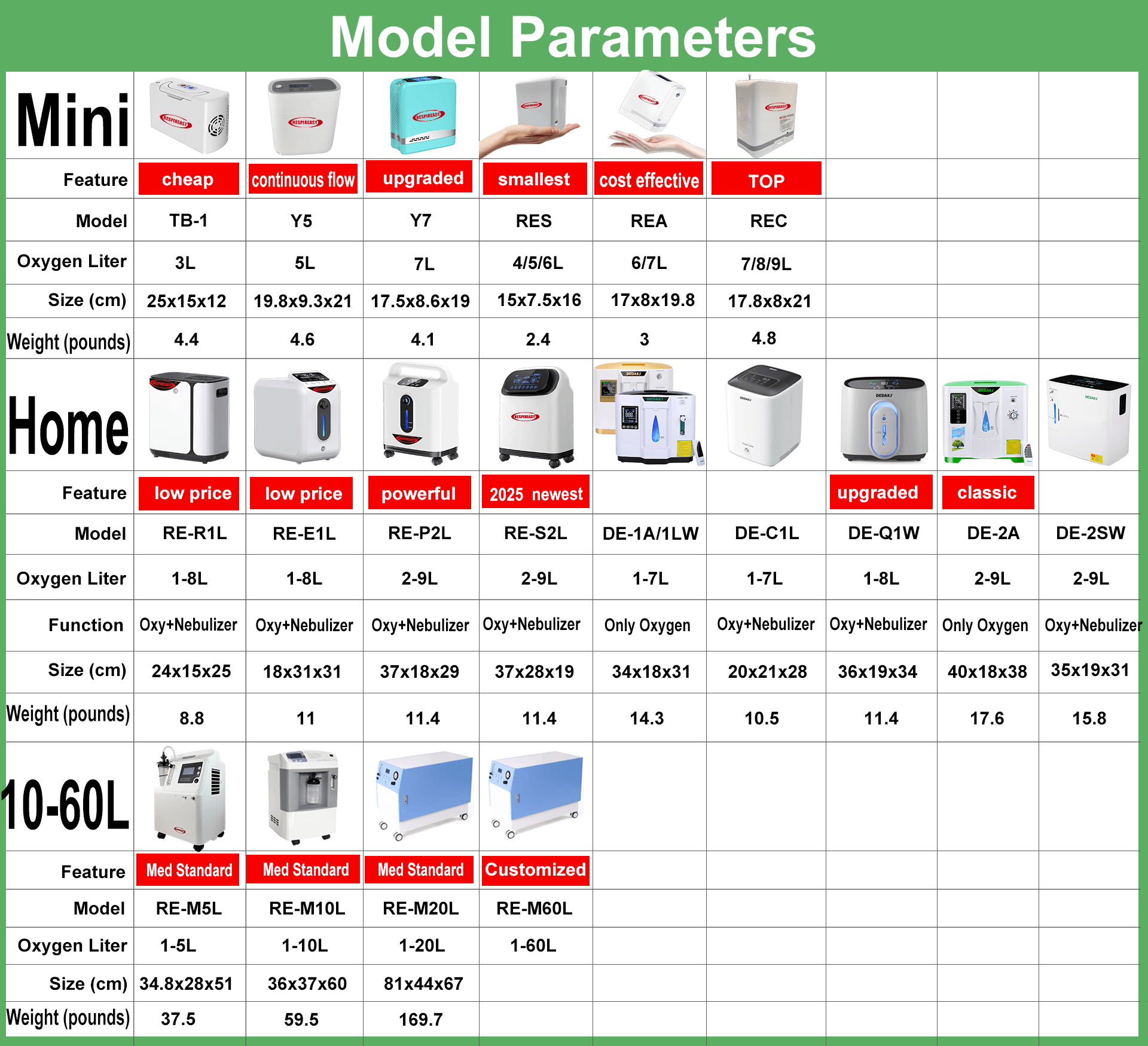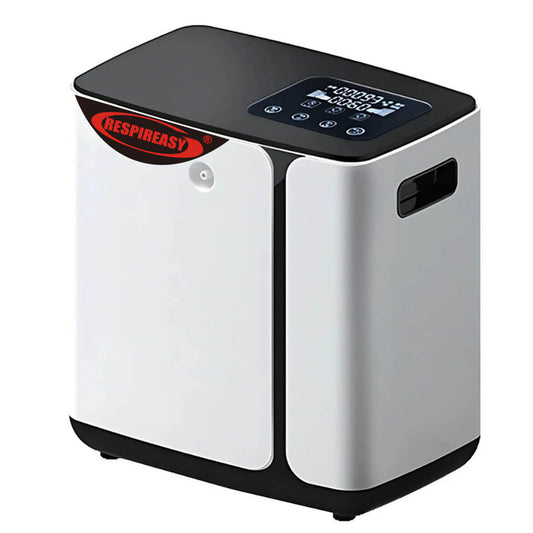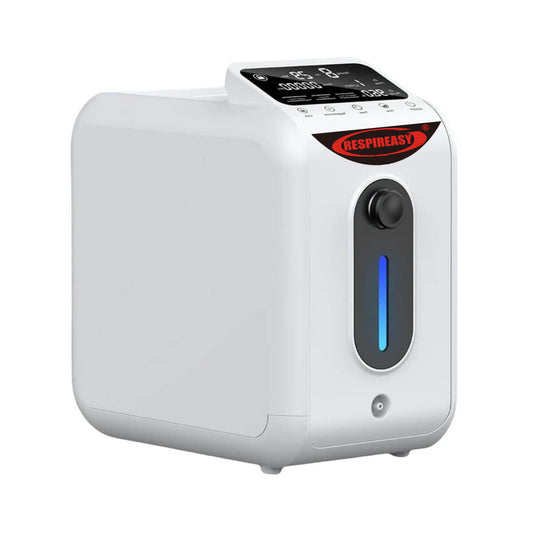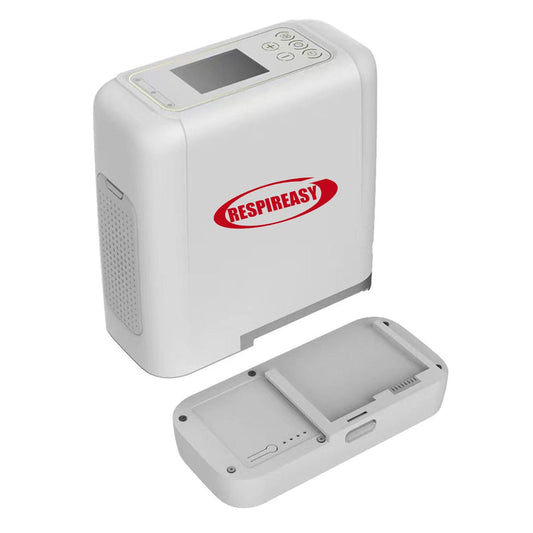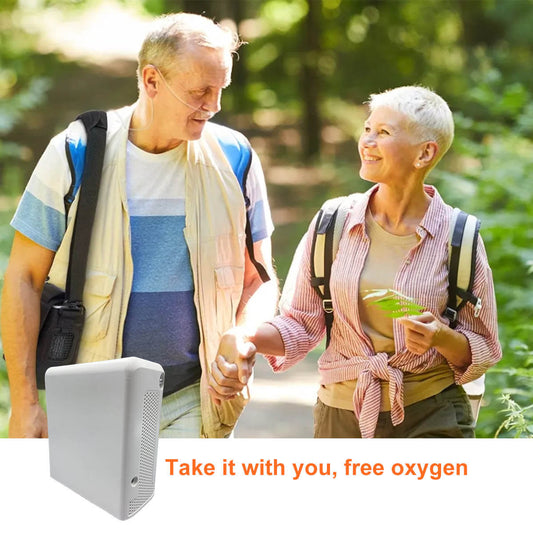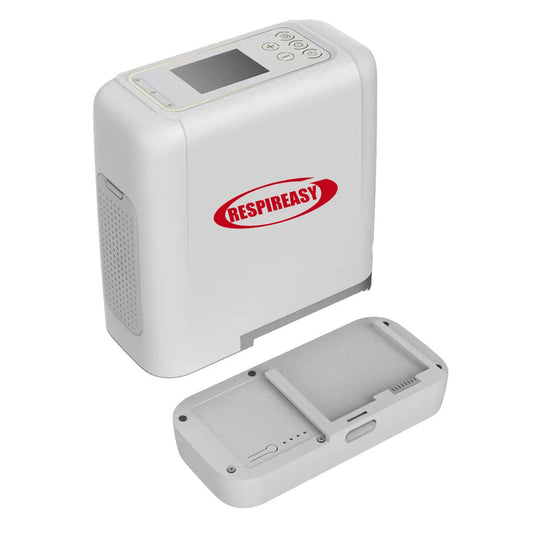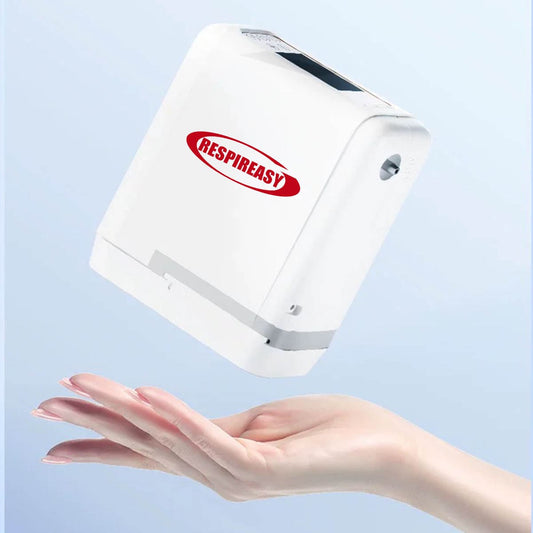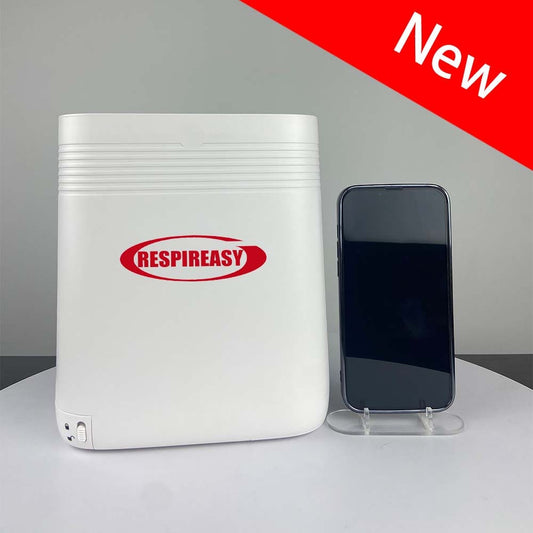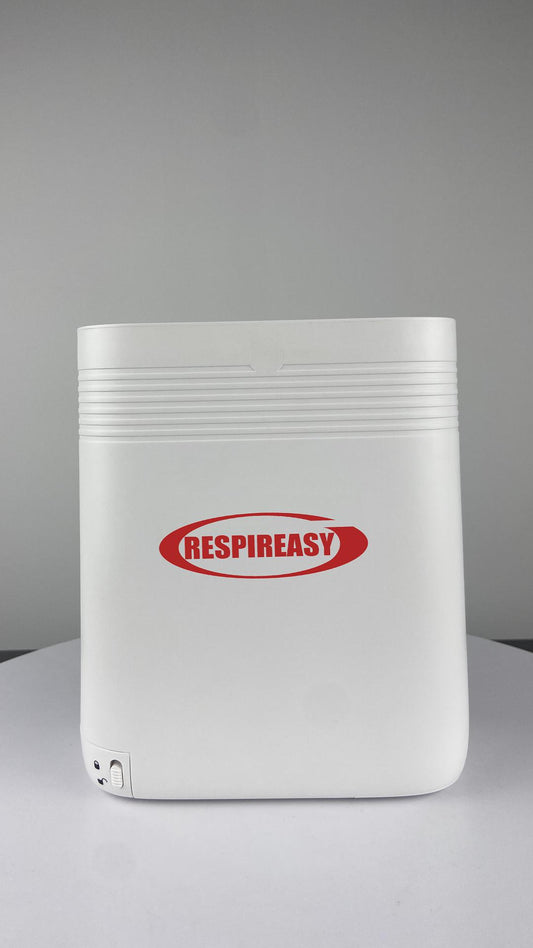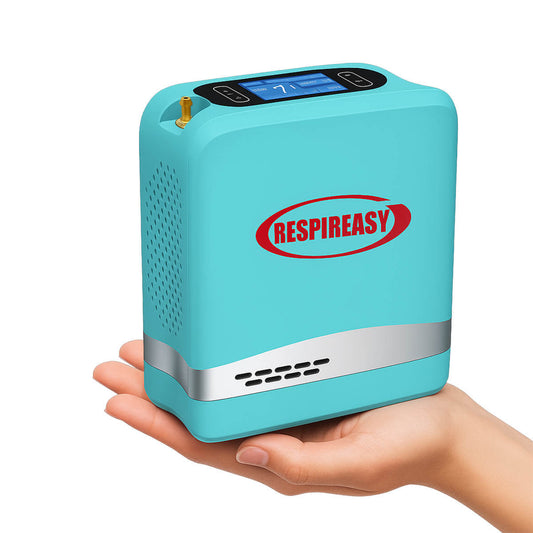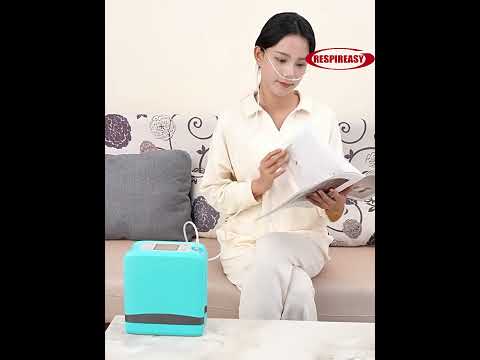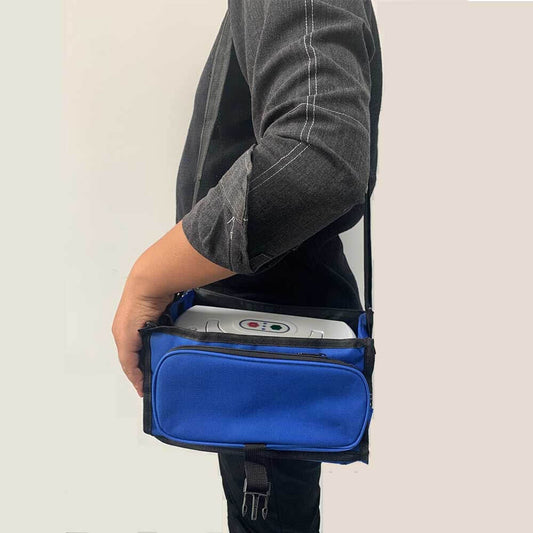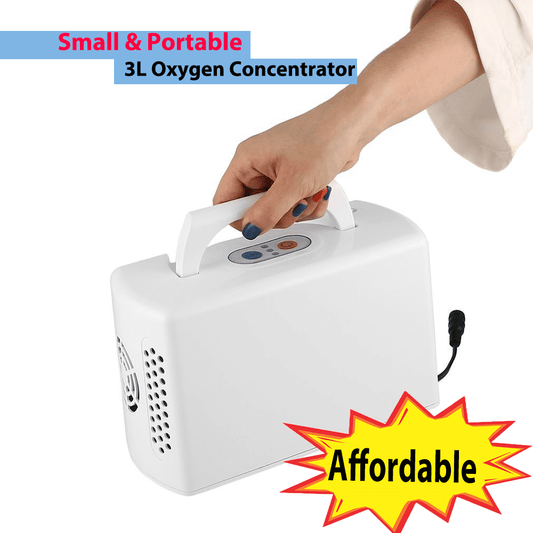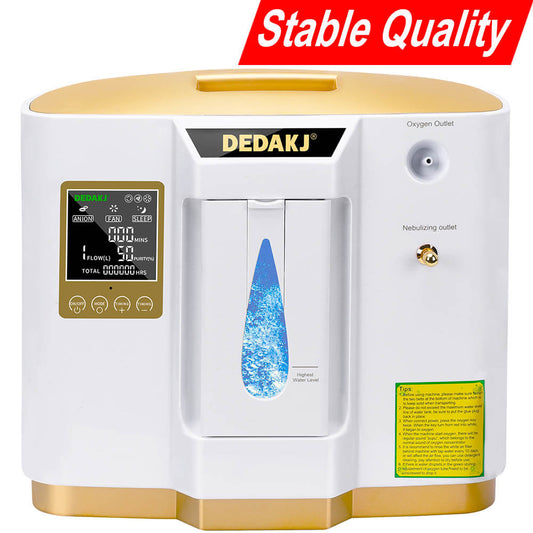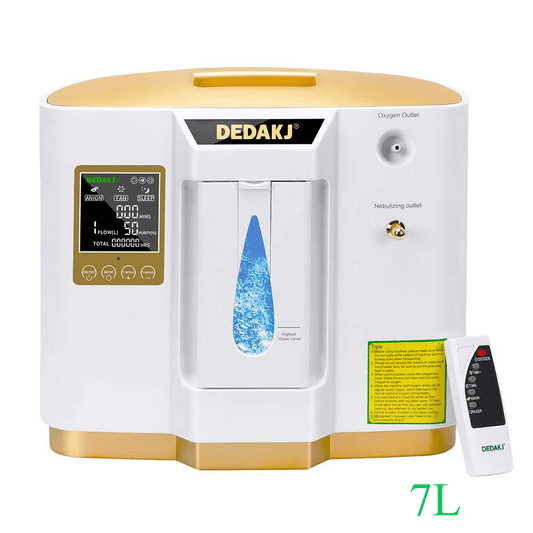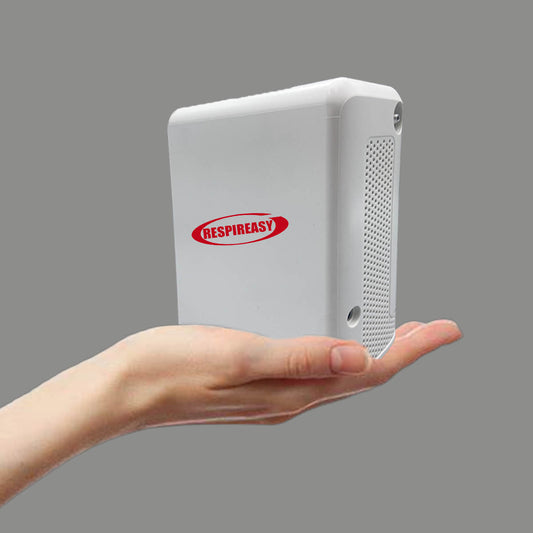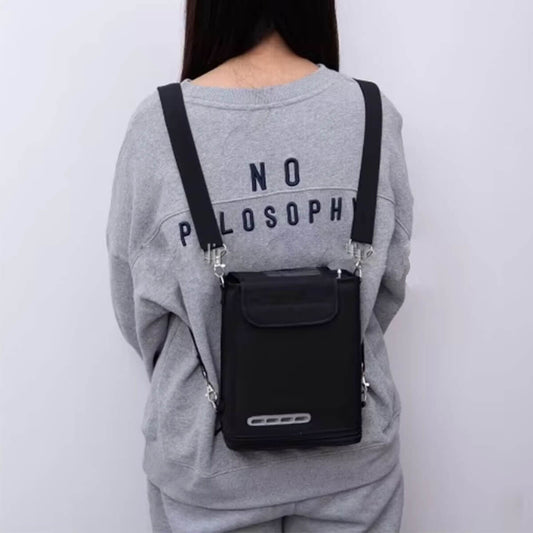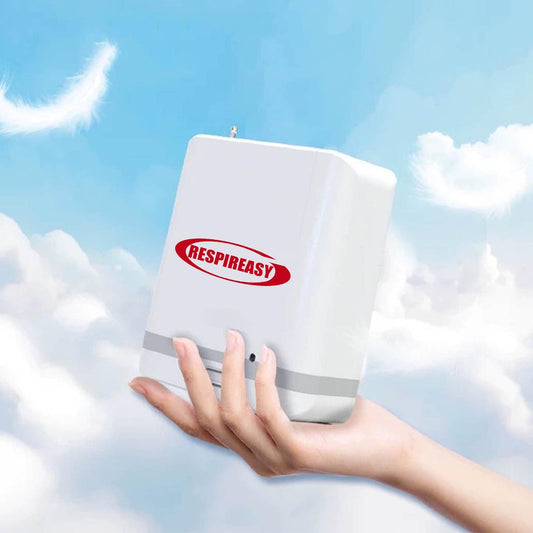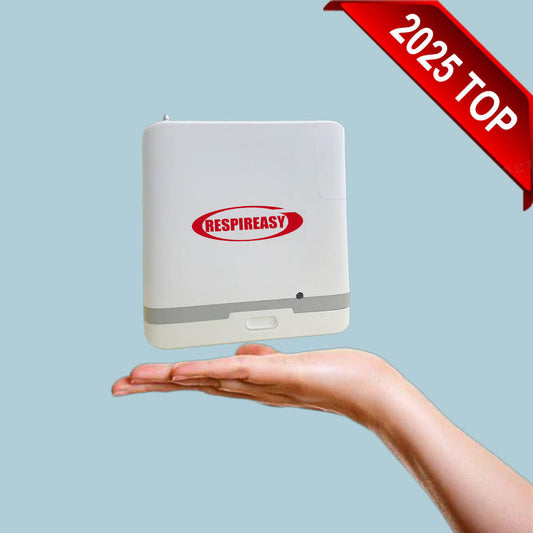How to Choose a Oxygen Concentrator in 2025?
01 Key Points for Purchasing an Oxygen Concentrator
Home oxygen concentrators do not produce oxygen through the decomposition of potassium permanganate catalyzed by manganese dioxide or the electrolysis of water. This is because chemical oxygen production is not very stable. If the raw materials are impure or the equipment is corroded, it can easily produce strange gases, which may even be harmful to health.
Oxygen concentrators on the market primarily use physical methods to purify oxygen from the air. For example, they use oxygen-enriched membranes, which exploit the property of polymer membranes that allows oxygen molecules in the air to pass through in a limited manner, to compress air and produce oxygen, similar to the principle of a water purifier. This type of oxygen concentrator can increase the oxygen concentration in the air from 21% to 40%. The oxygen produced is mainly used for industrial combustion and healthcare purposes.
Small oxygen concentrators for medical and household use are primarily molecular sieve oxygen concentrators. The molecular sieve absorbs nitrogen from the air under pressure, collects the remaining unabsorbed oxygen, purifies it, and processes it into high-purity oxygen. The nitrogen is then released by the molecular sieve to complete the cycle. The oxygen concentration produced by molecular sieves can reach 30%-90%, making it convenient to adjust the oxygen concentration for medical and healthcare purposes.
When purchasing an oxygen concentrator, we recommend considering the following four key factors:
1. Oxygen Capacity
The core parameter of an oxygen concentrator is its oxygen capacity, commonly measured in 1, 2, 3, 5, 8, 10, or more liters. For example, a 3L oxygen concentrator with a flow rate of 1-3L/min can maintain an oxygen concentration of 90%-96% for extended periods. As the flow rate is increased, the oxygen concentration decreases.
Medical-grade oxygen concentrators must achieve an oxygen concentration of 93% ± 3% to qualify. This is because when using an oxygen concentrator, some air is also inhaled, reducing the oxygen concentration by approximately 21%. This dilutes the actual inhaled oxygen concentration to around 45%. The final inhaled oxygen concentration circulating in the blood, the FiO2, is estimated to be only about 30%. To ensure that patients receive adequate oxygen therapy, the output oxygen concentration must be around 93%.
1- and 2-liter oxygen concentrators are classified as home health-care oxygen concentrators and are registered and manufactured as Class I medical devices. They are intended for health-care oxygen inhalation for individuals with mild hypoxia, such as pregnant women experiencing mild hypoxia, students with high mental workloads and high stress levels, and workers.
Oxygen concentrators of 3 liters or larger are classified as medical-grade and Class II medical devices.
People with respiratory conditions should consult their doctor to select an oxygen concentrator with appropriate specifications. For home backup, a 3L-5L oxygen concentrator is recommended, as it can be more effective in critical situations.
2. Noise
Oxygen concentrators use compressors, which involve large amounts of gas moving around. Noise has always been a technical pain point. Many users need to run their oxygen concentrators for extended periods, and the constant noise can be a significant mental challenge. Therefore, it's crucial to carefully consider noise parameters. The industry standard for all-in-one oxygen concentrators is a noise level of no more than 62dB.
Optimizing air ducts and providing sound insulation can significantly reduce operating noise levels. Excellent oxygen concentrators on the market can achieve noise levels of 40dB or less, providing significant user comfort during extended use.
3. Functionality
The international standard ISO8359:1996, "Safety Standard for Small Medical Oxygen Concentrators," and the US standard F1464-1993, mandate the following:
1. Molecular sieve oxygen concentrators must be equipped with an unchangeable cumulative timer function.
2. The product must be equipped with an oxygen concentration monitoring system.
3. The oxygen concentration must not fall below the safe value during use.
When purchasing an oxygen concentrator, consumers are advised to strictly adhere to regulatory standards. Most major brands of oxygen concentrators larger than 3L meet the above three regulatory requirements, so pay close attention and ask carefully when purchasing.
In addition, nebulization is often included as an auxiliary function in oxygen concentrators, allowing patients to inhale aerosolized medication simultaneously with oxygen. This function primarily benefits patients requiring nebulization therapy, such as those with acute and chronic asthma, bronchitis, and children's colds. Follow your doctor's instructions for use.
4. Appearance and After-Sales Service
As medical devices, oxygen concentrators are often associated with a sense of danger. Leaving them at home for long periods of time can lead to feelings of unhealthiness and unnecessary stress. In recent years, oxygen concentrators have become increasingly reminiscent of household appliances. Their attractive design makes them a natural part of everyday life. They're not just used by the elderly and sick, but also by younger people who are increasingly interested in oxygen therapy and health care, focusing on respiratory and mental health.
Oxygen concentrators are also highly dependent on pre-sales and after-sales service. Most people may have never encountered such a product before, so comprehensive information is urgently needed, from how to choose it to how to use it. Installation and commissioning after purchase, as well as any issues encountered during use and product warranty issues, all directly impact the user experience and even life safety.
02 Recommended oxygen concentrator models
*Recommended portable oxygen concentrator series:
(1) 2025 lightest and smallest portable oxygen concentrator, palm-sized, the same size as a smartphone;15*7.5*16cm (5.9'' * 2.9'' * 6.3''); 1.1KG, 2.4lbs
Model: RESPIREASY RES-6

(2) Super silent portable oxygen concentrator, noise: ≤30 dB, Oxygen Flow Rate Settings: 1-7 LPM, powerful enough
Model: RESPIREASY REA-7

(3) 2025 TOP portable oxygen concentrator, up to 9 liters, very mini and portable
Model: RESPIREASY REC-9

(4) Continuous oxygen type portable oxygen concentrator (non-pulse type), can be used with CAPA BIPAP machine.
Model: RESPIREASY RE-Y5

*Recommended Home Oxygen Concentrator Series:
(1)8 Liters Continuous Flow Oxygen Concentrator, small size, flow rate up to 8 liters per minute
Model: DEDAKJ RE-R1L
(2)1L-8 L/Min Oxygen Concentrator with oxygen making function+ nebulization function, 2 functions in 1
Model: DEDAKJ RE-E1L

(3)2025 newest Home Oxygen Concentrator 2-9 LPM adjustable
Model: DEDAKJ RE-S2L

(4)2025 newest Home Oxygen Concentrator 2-9 LPM adjustable
Model: DEDAKJ RE-P2L

*Recommended Medical Oxygen Concentrator Series:
(1)Medical Oxygen Concentrator Continuous Flow 1–5L/min with Nebulizer Function
Model: DEDAKJ RE-M5L

(2)Medical Oxygen Concentrator Continuous Flow 1–10L/min with Nebulizer Function
Model: DEDAKJ RE-M10L

(3)Medical Oxygen Concentrator Continuous Flow 1–20L/min
Model: DEDAKJ RE-M20L






























